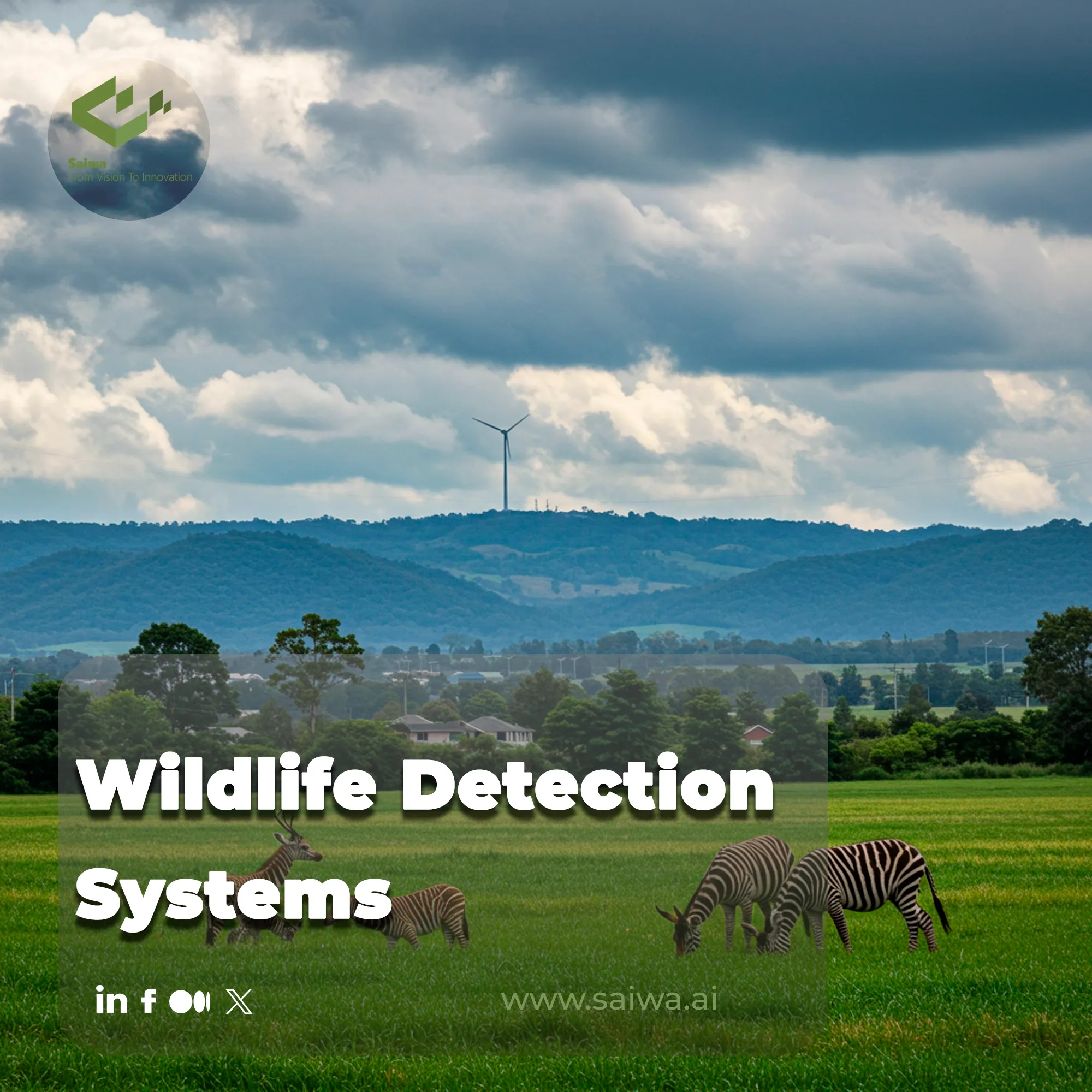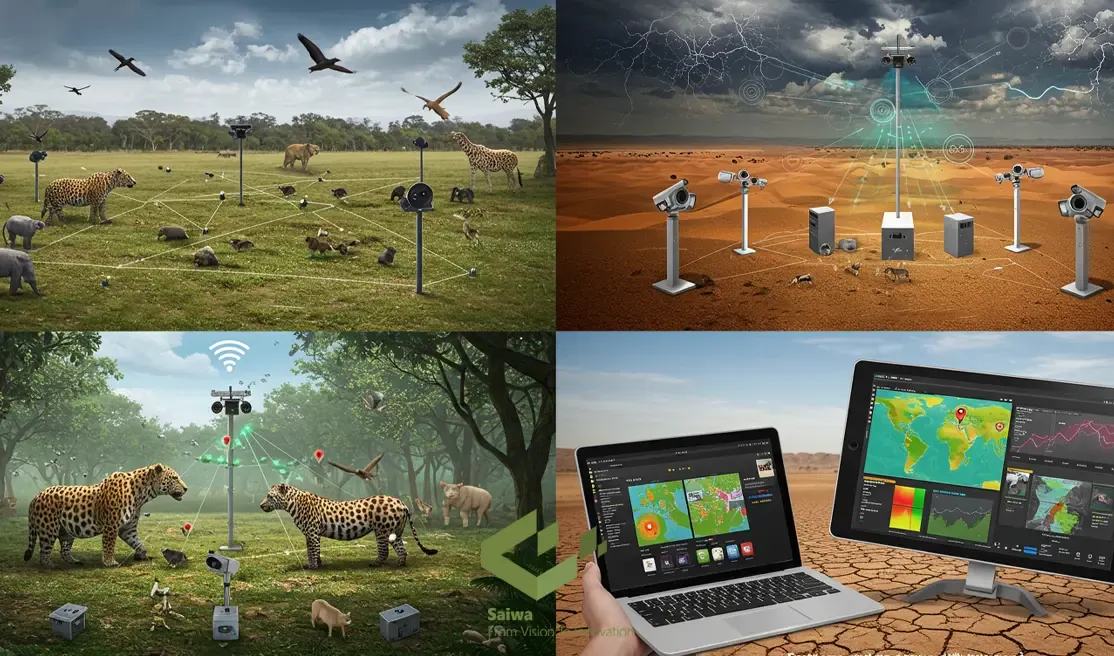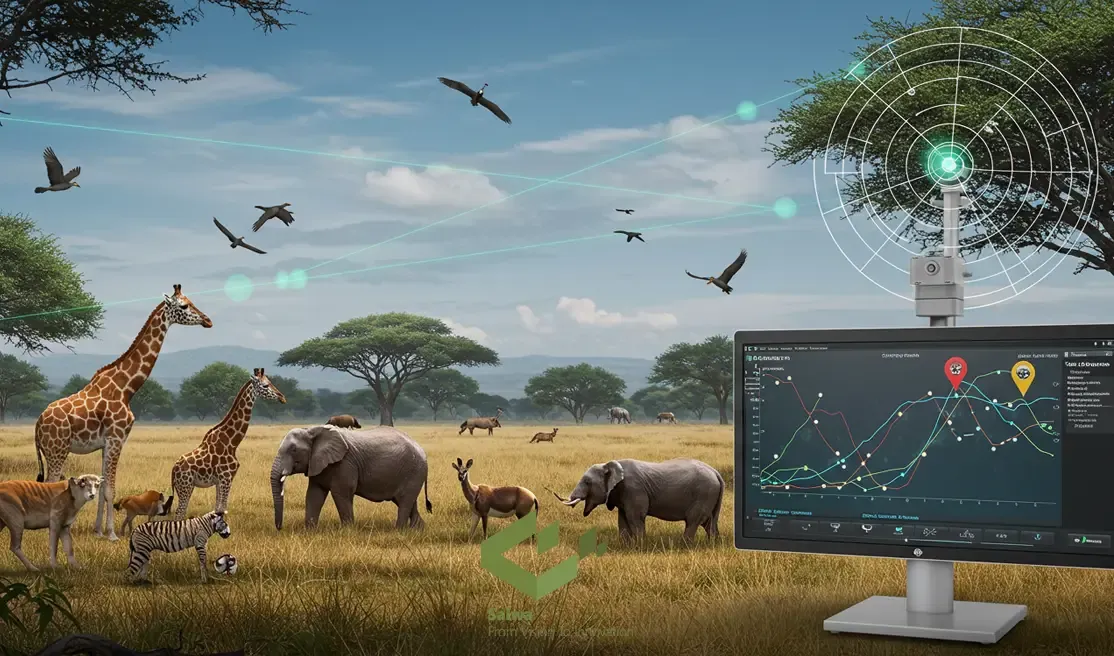Wildlife Detection Systems: AI Habitat Protection in 2025

According to Smart Growth America, there are about 1–2 million collisions each year in the U.S. involving vehicles and large wild animals, and these collisions cause roughly 200 human fatalities, about 26,000 injuries, and at least $8 billion in property damage.
Traditional mitigation efforts like static warning signs and wildlife fencing provide limited protection, failing to respond dynamically to actual animal presence near roadways.
Advanced wildlife detection systems address these limitations by applying artificial intelligence and sensor fusion to monitor habitats in real-time and trigger immediate protective responses. These intelligent platforms continuously track animal movements near highways and critical zones, distinguishing between species, predicting crossing patterns, and activating dynamic warning systems that alert drivers only when genuine threats exist.
This article presents how AI-powered wildlife detection works, examining core technologies, practical deployment requirements, and real-world applications across diverse environments.
Wildlife Detection Systems Explained?
Wildlife detection systems are intelligent monitoring platforms that use artificial intelligence, thermal imaging and sensors to identify animal presence near roadways and protected habitats in real-time. Unlike passive warning signs or static fencing, these systems actively track wildlife movements, predict crossing behaviors, and trigger dynamic responses like illuminated warning signs, traffic alerts, or deterrent mechanisms that activate only when animals approach danger zones.
Importance of AI Driven Systems
This technology matter because it overcomes the fundamental limitations of existing methods, which are unable to respond to the presence of wildlife. Old methods rely on drivers noticing static signs and reducing their speed. This method is ineffective in conditions of low visibility, during high-speed travel or when drivers are distracted.
In contrast, AI-powered detection systems continuously monitor the environment, function in complete darkness and poor weather conditions, can distinguish between threatening and non-threatening animal movements and instantly communicate threats to drivers via dynamic messaging.
Inside the Mechanics of Wildlife Detection Systems
Wildlife detection platforms integrate multiple technologies and processes to deliver reliable, real-time monitoring across diverse environmental conditions:
- Multisensor Data Fusion: AI algorithms integrate information from multiple sensor types simultaneously, cross-verifying detections to distinguish actual wildlife presence from false triggers caused by vegetation movement or non-target objects.
- Species Classification and Tracking: Computer vision models analyze visual and thermal data to classify detected animals by species and size, determining whether they pose collision risks.
- Real-Time Decision Making: Edge AI processes sensor data directly at deployment sites, enabling instantaneous threat assessment and response without requiring constant connection to central servers.
- Dynamic Response Activation: Upon confirming wildlife threats, systems trigger appropriate responses including activating dynamic message signs warning approaching drivers then adjusting traffic signal timing to slow vehicles.
- Adaptive Learning and Calibration: Machine learning models continuously improve detection accuracy by learning from new data without requiring manual recalibration for every variation in weather, vegetation, or animal activity patterns.
Where Can Wildlife Detection Systems be Applied
AI-powered wildlife monitoring addresses diverse challenges across transportation safety, conservation management, and ecological research:
- Highway Collision Prevention: Detection systems deployed along high-risk highway corridors monitor animal approaches and activate dynamic warning signs that alert drivers to actual wildlife presence.
- Protected Habitat Monitoring: Conservation organizations deploy detection systems around protected areas to track animal movements, monitor population distributions, and identify critical corridors connecting fragmented habitats.
- Species Population Tracking: AI systems automatically count and classify animals detected across monitored zones, providing population estimates without requiring labor-intensive manual surveys.
- Infrastructure Protection: Airports, railways, and industrial facilities deploy detection systems to monitor for wildlife that could pose operational hazards. Real-time alerts enable rapid response to prevent bird strikes or clear animals from dangerous zones before incidents occur.
- Migration Monitoring: Seasonal detection deployments track migration corridors, timing, and volumes for species ranging from large ungulates to birds.

Proven Deployment Examples
Real-world implementations across North America demonstrate the practical viability and measurable impact of advanced wildlife detection systems:
British Columbia Mountain Corridors: Radar + thermal wildlife-detection systems deployed along Highway 3 in southeastern British Columbia use volumetric radar presence detectors, thermal & colour cameras, a central control system, and dynamic warning signs to advise motorists when large animals are on or near the roadway. According to one summary of the project, these systems achieved reductions in animal-vehicle collisions of approximately 79 % and 23 % on two monitored corridors. Source
Alberta Remote Monitoring Networks: In southwestern Alberta along Highway 3, the Wildlife Science Centre (University of Alberta) and partners have installed 80 motion-sensitive cameras and fitted GPS collars to elk, mule deer and grizzly bears to monitor wildlife movement and use of crossing structures. Source
Wildlife Crossing Structures (North America):Studies reviewing wildlife crossing structures (over- and underpasses combined with fencing) report that, when properly installed and maintained, such structures can reduce wildlife‐vehicle collisions by around 86 %. Source
Benefits and Challenges of Wildlife Detection Implementation
Understanding Benefits and Challenges both are essential for balanced decision-making and effective long-term planning. Here are some mentionable examples of both.
Key Advantages
- Dramatic Collision Reduction: Properly deployed systems reduce wildlife-vehicle collisions by 86 % in monitored corridors, saving human lives, preventing animal deaths, and eliminating millions in property damage and associated costs.
- All-Weather Operational Reliability: Radar-based detection functions effectively in fog, rain, snow, darkness, and other adverse conditions when collision risks peak and driver visibility decreases, maintaining protection when traditional approaches fail completely.
- Low False Alarm Rates: Multisensor fusion verification ensures high accuracy, triggering alerts only for genuine threats. This credibility prevents driver desensitization that occurs when systems generate frequent false warnings that users learn to ignore.
- Scalable Deployment: Technology adapts to diverse environments from targeted high-risk zones to extended remote corridors, with wireless sensor networks and solar power enabling deployment where traditional infrastructure proves impractical.
Challenges
- Environmental Detection Limitations: Dense forests, steep terrain gradients, and complex topography create blind spots or attenuate sensor signals, requiring careful site analysis, supplemental sensor arrays, and strategic positioning to ensure complete coverage without gaps.
- Remote Infrastructure Demands: Supplying consistent power and reliable data connectivity in areas far from electrical grids and network coverage represents major logistical and financial challenges, often necessitating solar installations, battery banks, and satellite communication systems.
- Initial Investment Costs: Advanced sensor arrays, edge computing hardware, communication infrastructure, and professional installation represent substantial upfront expenses that can challenge transportation agency budgets despite long-term cost savings from collision reduction.

How to Implement Wildlife Detection Systems
Organizations deploying wildlife detection benefit from systematic approaches addressing technical, logistical, and operational requirements:
- Conduct Site Assessment and Risk Analysis: Identify high-collision corridors through historical incident data, assess environmental conditions affecting sensor performance, map terrain and vegetation impacting coverage, and determine infrastructure availability for power and connectivity before selecting deployment locations.
- Design Multisensor Array Configuration: Specify sensor types, quantities, and positioning based on site-specific requirements including detection range needs, coverage area dimensions, environmental challenges, and target species characteristics. Plan redundancy ensuring continued operation if individual sensors fail.
- Select Edge Computing and Communication Architecture: Choose processing platforms capable of running AI models locally with sufficient computing power for real-time analysis, and establish data transmission methods whether cellular, satellite, or hardwired connections based on site accessibility and reliability requirements.
- Integrate Dynamic Response Mechanisms: Connect detection systems with appropriate warning infrastructure including dynamic message signs, traffic signal controllers, roadside lighting systems, or acoustic deterrents that activate automatically when wildlife threats are confirmed through multisensor verification.
- Establish Calibration and Maintenance Protocols: Define procedures for initial system tuning, ongoing performance monitoring, seasonal recalibration, and remote diagnostics that ensure sustained accuracy. Plan regular site visits for physical sensor cleaning, hardware inspection, and verification of continued optimal operation.
Conclusion
Wildlife detection has evolved from simple infrared beam-break systems into sophisticated platforms fusing advanced radar, thermal imaging and artificial intelligence. Modern systems operate continuously in all weather conditions, distinguish between species, track movement patterns, and trigger dynamic responses that have reduced collisions by far in deployed corridors. This technology protects both human safety and endangered wildlife populations while generating unprecedented ecological data supporting conservation research.
From a technical perspective, platforms like Sairone significantly enhance the reliability of modern wildlife-detection systems by providing high-resolution population monitoring, species-level identification, and long-term behavioral analytics. Unlike conventional roadside systems that only detect momentary presence, Sairone analyzes aerial and satellite imagery to generate validated population counts, geolocated movement tracks, and seasonal migration patterns.
This environmental intelligence complements real-time roadside detection by offering a broader ecological context—helping engineers and conservation teams understand not only when wildlife appear near highways, but why, from where, and in what numbers.
By integrating AI-driven counting, polygon/box-based marking, accuracy-adjustable models, and multi-sensor analytics, Sairone enables transportation agencies and conservation groups to design better mitigation plans, allocate resources more effectively, and justify funding with high-confidence data. The combination of macro-level habitat analysis with micro-level detection dramatically improves both collision-prevention systems and long-term conservation outcomes.
Note: Some visuals on this blog post were generated using AI tools.
